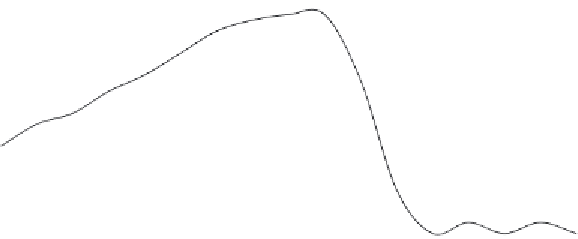Agriculture Reference
In-Depth Information
lactation and a shorter weaning-to-oestrus interval, in order to maximise the number of
piglets each sow produces annually. Swine breeding farms have become much larger in
recent years, often with a functional distribution of space that limits the room available
for each sow. All these changes have contributed to increasing environmental pressure
on the sow at farrowing.
10.2
Physiology of farrowing
The physiology of farrowing is very complex. Indeed, several hormones act and interact
to regulate the farrowing process. In the latest stages of pregnancy, hormones such as
progesterone, LH, estrogens, cortisol, prolactin, relaxin, and prostaglandins become the
main actors that regulate all the physical events leading to parturition (Figure 10.1). All
these hormones, regulated by various internal clocks and signalling systems, interact and
influence each other in a very refined manner (Anderson, 2000).
Behavioural expression is also very important for the farrowing process. Sows express
an innate hormone-driven nest-building behaviour which signals the beginning of
parturition (Algers and Uvnäs-Moberg, 2007). However, the environment can also have
an important, though indirect, influence on the pattern of these hormones. For example,
a restricting environment can influence nest-building behaviour, especially in modern
swine production systems, where the sow is pressured by several external factors (Damm
et al.
, 2003). This refined, delicate hormonal process clearly requires very well-defined
premises in order to proceed properly. In addition to housing, nutrition and disease may
Prolactin
Oxytocin
Estrogens
Progesterone
PGF2α
Relaxin
-9
-8
-7
-6
-5
-4
-3
-2
-1
0
1
2
3
4
5
6
7
Days to farrowing (0)
Figure 10.1. A schematic description of the concentrations of reproductive hormones during pregnancy in
the sow (modified from Anderson, 2000). Hormones concentrations undergo major changes only a few days
before farrowing.






















































